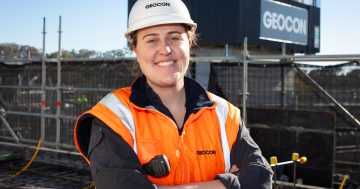
More women in leadership roles is better for business.
Gender equality in the workplace is very much on the global agenda at the moment, thanks in part to Hollywood’s support of the Time’s Up campaign, of which socially important goals include improving pay parity between the sexes.
With this vital conversation now well and truly raging at all levels, there is an opportunity to look in our own backyard and see whether we still need to do more in Australia to improve workplace equality.
Women make up about 46 per cent of Australia’s workforce, but the average Australian woman has to work an extra 66 days a year to earn the same pay as the average man.
Women are over-represented when it comes to part-time and casual employment, but under-represented on boards and at executive levels.
As at 30 November 2017, the percentage of women on ASX 200 Boards was 26 per cent. While this is a significant leap from the just 8.3 per cent in 2010, there is still a long way to go.
Research by the Australian Institute of Company Directors suggests there is much to be gained by companies lifting representation of women. It found that companies in the ASX 200 with the largest market capitalisations have the highest proportion of female board members.
One of the key findings in a report by the 30% Club is that women bring different and additional skills to a board. It states, “there are more female board members with sales and marketing and consulting experience than male board members”.
The reasons behind the level of representation of women on boards are varied, but one factor that could increase numbers is to provide women with the skills, experience and confidence to seek out board appointments when they become available.
Work is underway to increase female board participation in Canberra. For example, the ACT Government has tied its triennial funding of sporting bodies to them, committing to at least 40 per cent representation of women on their boards by 2020.
Canberra Business Chamber’s Future Leaders Program is designed to give young Canberrans exposure to board experience.
The Future Leaders Program, delivered in partnership with the Australian Institute of Company Directors (AICD), provides a strong practical and theoretical introduction to the roles and responsibilities of board members.
Applications for this program, over the three years it has been operating, have shown there is great demand from young business leaders for this type of opportunity, and there has been particularly strong demand from women wishing to participate in such a program.
The Chamber would like to see the Future Leaders Program become a foundation for an initiative to provide mentorship and training in board governance to open new doors for women who wish to become company directors.
Now is the time to take real steps towards closing the gender gap, and having more women involved in policy and decision making at the highest levels can only contribute positively towards this aspiration.
With 2018 just beginning, it would be an affirming and potentially profitable New Year’s resolution for ACT businesses and organisations to refresh their strategy and practices to increase female representation on boards and reap the benefits this can provide.




















